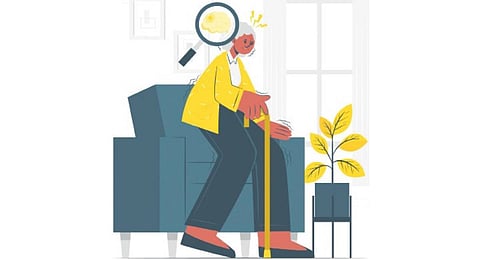

KOCHI: Parkinsonism is a neurological disorder that affects movements of the body. It is characterised by the progressive loss of dopamine-producing neurons in the brain, resulting in tremors, slowness of activities, stiffness of the limbs and difficulty with coordination and balance.
The most common type of Parkinsonism is Parkinson’s disease, which affects approximately 1 per cent of people over the age of 60.
Symptoms
Symptoms of Parkinsonism typically begin with mild tremors in one hand or arm, which may progress to affect both sides of the body over the years. Other common symptoms include stiffness in the limbs, slowness of movement and thought, difficulty with balance and coordination, and a shuffling gait.
Non-motor symptoms
Parkinson’s disease is often associated with motor symptoms, such as tremors, rigidity, bradykinesia (slowness of movement) and postural instability. However, many non-motor symptoms can also occur, some of which may appear before motor symptoms develop. It is important to discuss any non-motor symptoms with a healthcare professional, as they can impact quality of life and may require specific management strategies.
Many experience sleep disorders like insomnia, restless leg syndrome, sleep apnea
Depression and anxiety
Some may experience cognitive changes, such as difficulty with memory
Loss of sense of smell is an early symptom
Constipation is a common symptom
Fatigue can impact the quality of life
Urinary problems, such as urgency, frequency, and incontinence, are common
Sexual dysfunction can also occur in patients
Treatment
There are currently a variety of treatments that can help manage the symptoms and improve quality of life. The choice of treatment depends on the severity of symptoms, the age, overall health of the patient, and other individual factors. It is important to work closely with a healthcare professional to develop an individualised treatment plan.
Medications: Several types of medications are available to increase dopamine levels in the brain
Deep brain stimulation (DBS): This surgical procedure involves implanting a device in the brain that sends electrical signals to help control tremors and other symptoms
Physical therapy: Exercise and physical therapy can help improve mobility, strength, balance, and coordination
Speech therapy: Speech therapy can help improve speech and swallowing difficulties
Occupational therapy: To develop strategies to manage daily activities
Lifestyle modifications: A healthy diet, regular exercise, and stress management techniques can also help manage symptoms.
Role of exercise
Exercise can play an important role in managing the symptoms. Here are some specific benefits of exercise:
Improved mobility
Reduced stiffness
Improved cardiovascular health
Improved mood
Increased neuroplasticity
It is important to work with a physiotherapist to develop an exercise plan.
Mind and body
Got health concerns you want to share with a doctor? Are you looking for credible answers regarding symptoms, medicines or lifestyle disorders? Write to us on cityexpresskoc@newindianexpress.com, and we will get healthcare professionals to answer them.
The writer is a senior consultant in the department of neurology at KIMSHEALTH